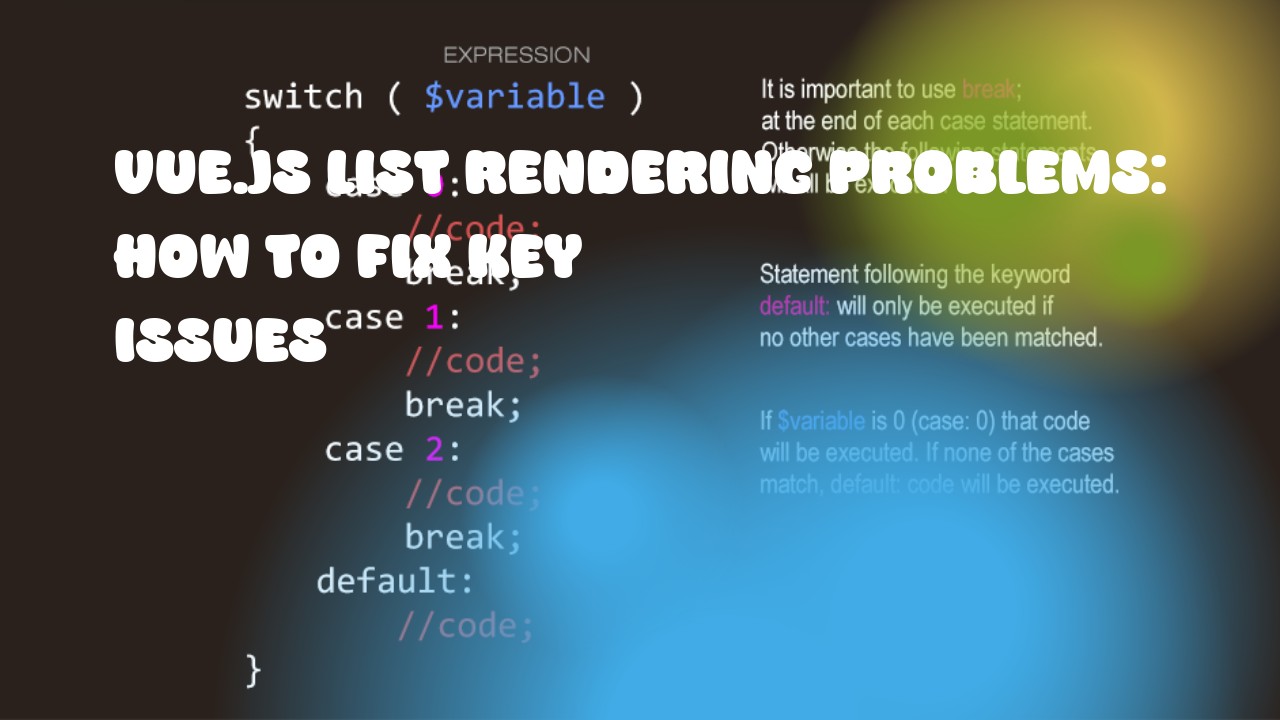In Vue.js, when you're rendering lists, it's crucial to use the v-for directive with a key attribute to help Vue optimize the rendering process and avoid unnecessary re-renders. Here are some common problems faced in list rendering and how to fix them:
-
Missing Key Attribute: If you don't provide a
keyfor each element in your loop, Vue will default to using the index of each item as its key. This can lead to performance issues as it will force unnecessary re-renders when items are added or removed from the array.Example:
<ul> <li v-for="item in items">{{ item }}</li> </ul>Fix: Add a unique key to each element:
<ul> <li v-for="(item, index) in items" :key="index">{{ item }}</li> </ul> -
Using Array Index as Key: Using the array index for the
v-forkey is not recommended because it can cause problems when inserting or removing elements from the list. Instead, assign a unique identifier to each item:<ul> <li v-for="item in items" :key="item.id">{{ item }}</li> </ul> -
Duplicate Keys: Ensure there are no duplicate keys across all elements in your list. If two or more items have the same key, Vue may throw an error and not render them correctly.
-
Nested Lists and Components with Keys: When dealing with nested lists or components within
v-for, each instance should have its own unique key attribute. -
Component Key Props vs Element Key Attribute: If you're using a component inside a loop, the component should have a
keyprop, not the element itself. The:keyon an element within a list can be useful for cases like conditional rendering or when you need to re-render that specific element without re-creating its instance.
Remember, the key attribute helps Vue identify which items have changed, are added, or removed, leading to efficient updates in your application. By using keys appropriately, you'll ensure optimal performance and a better user experience.

